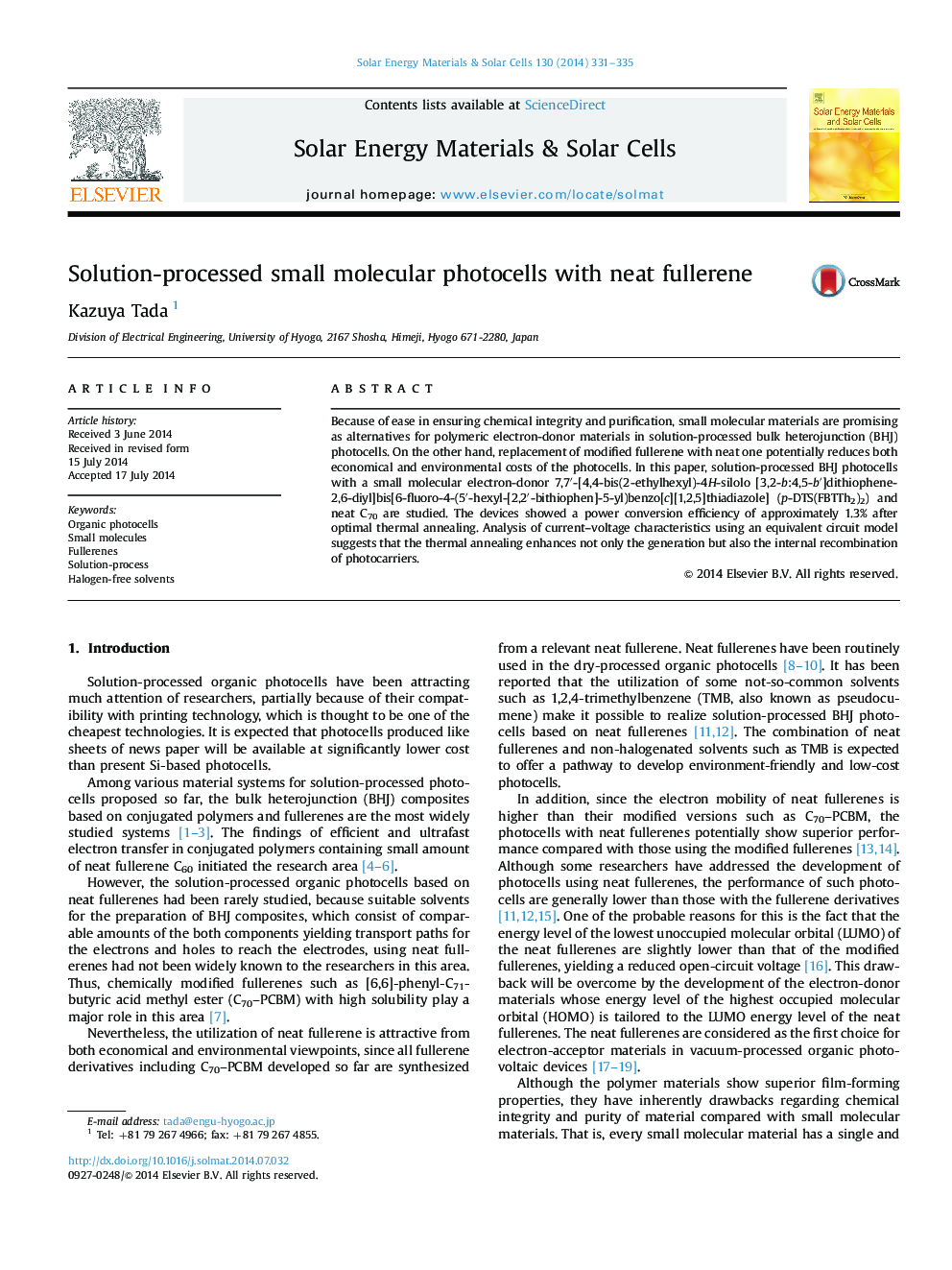| Article ID | Journal | Published Year | Pages | File Type |
|---|---|---|---|---|
| 6535576 | Solar Energy Materials and Solar Cells | 2014 | 5 Pages |
Abstract
Because of ease in ensuring chemical integrity and purification, small molecular materials are promising as alternatives for polymeric electron-donor materials in solution-processed bulk heterojunction (BHJ) photocells. On the other hand, replacement of modified fullerene with neat one potentially reduces both economical and environmental costs of the photocells. In this paper, solution-processed BHJ photocells with a small molecular electron-donor 7,7â²-[4,4-bis(2-ethylhexyl)-4H-silolo [3,2-b:4,5-bâ²]dithiophene-2,6-diyl]bis[6-fluoro-4-(5â²-hexyl-[2,2â²-bithiophen]-5-yl)benzo[c][1,2,5]thiadiazole] (p-DTS(FBTTh2)2) and neat C70 are studied. The devices showed a power conversion efficiency of approximately 1.3% after optimal thermal annealing. Analysis of current-voltage characteristics using an equivalent circuit model suggests that the thermal annealing enhances not only the generation but also the internal recombination of photocarriers.
Related Topics
Physical Sciences and Engineering
Chemical Engineering
Catalysis
Authors
Kazuya Tada,
